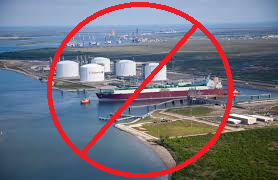Stop the Constitution Pipeline!
April 13, 2016Range Resources Exec's Well-Site Remarks Drawing Sharp Criticism
April 22, 2016The Guardian, April 7, 2016
Two scientists have highlighted dangerous water contamination from a fracking operation in Wyoming, three years after the US Environmental Protection Agency decided to abandon its investigation into the matter.
The report found there were dangerous levels of chemicals in the underground water supply used by the 230 residents of Pavillion, a small town in central Wyoming. Levels of benzine, a flammable liquid used in fuel, were 50 times above the allowable limit, while chemicals were dumped in unlined pits and cement barriers to protect groundwater were inadequate, the research found.
Dominic DiGiulio worked with Stanford academic Robert Jackson on the research after the EPA decided to ditch its own study into the situation at Pavillion, which came to light after residents complained about the smell and taste of their water. DiGiulio’s work for the EPA was abruptly halted and handed over to state authorities in Wyoming, which have said there are no firm plans to take action over the issue.
Using publicly available information and freedom of information requests, DiGiulio and Jackson have published a report in Environmental Science & Technology that examines what went wrong at Pavillion. The research finds that workers were drilling at very shallow depths, as little as 700ft underground, placing the fracking operation uncomfortably close to the drinking water aquifer that supplies the wells used by Pavillion residents.
The water contamination caused by the fracking was compounded by questionable practices going back to the 1960s, before fracking took place, such as the dumping of chemicals into unlined pits. The legacy of this pollution was evident several years after fracking finished in 2007, with the EPA starting its investigation in 2010 before turning it over to Wyoming.
“The decision to hand it over was made by senior officials, not the scientists,” DiGiulio said. “What happened there could happen elsewhere. It was concerning how shallow the drilling was – there’s not much of a buffer to where people draw their water. It’s legal, but maybe there should be more of a barrier there.
“This kind of practice appears to be widespread but we really need research into this. We just don’t know what is happening here. If it is happening, it becomes a political issue for Congress.”
Hydraulic fracturing, or fracking, is a process where water and chemicals are injected underground in order to draw out gas or oil resources from rock formations. The practice has proved controversial in some communities and has become a point of contention between the Democratic presidential candidates Hillary Clinton and Bernie Sanders.
Fracking is lightly regulated in the US due to its exemption from Safe Drinking Water Act restrictions. Companies – such as those operating in the Pavillion Field region, which has more than 180 oil and gas wells – are usually able to drill to any chosen depth.
Jackson claimed the EPA ended its study due to “cold feet” at a time when the Obama administration was promoting the expansion of natural gas as a way to lower the US’s greenhouse gas emissions.
“It was a time of great contention as natural gas was a fossil fuel pillar for the administration,” he said. “It’s important to say that fracking is often done safely. But in the instances where something goes wrong, we need to know and we need to learn from them.
“This kind of thing happens more often than it should. It’s a minority of cases but many states allow shallow fracturing. Nothing gets people’s back up more in the US than federal regulations so I’d like to see the industry police itself better. They don’t need to acknowledge guilt but just point out best practice and help eliminate the bad practices.”
An EPA spokeswoman said the agency decided that it was best for it to support Wyoming’s “further investigation of drinking water quality” near Pavillion in 2013.
“Since that time, EPA had been working closely with the state throughout our groundwater investigation activity and welcomed the state’s leadership on the next phase of investigation,” she said.
“EPA and the state both agreed that the best path forward in advancing the understanding of groundwater issues in the Pavillion area included EPA’s support for the state’s additional investigation of pits, production wells and drinking water. We determined that this additional investigation was a positive step that would generate additional information and build on EPA’s work.”
The spokeswoman said DiGuilio and Jackson’s research will be considered as part of a national study into the impact of fracking upon drinking supplies that is expected to be finished later this year.
“This assessment is an important resource for federal, tribal, state and local officials; industry; and the public to better understand and address any vulnerabilities of drinking water resources to hydraulic fracturing activities,” she said.



